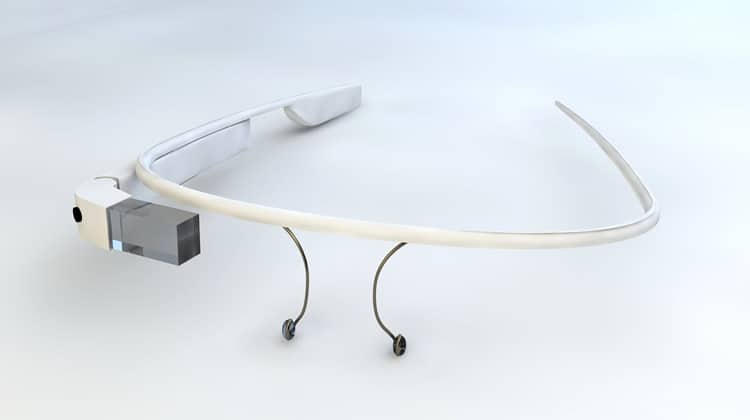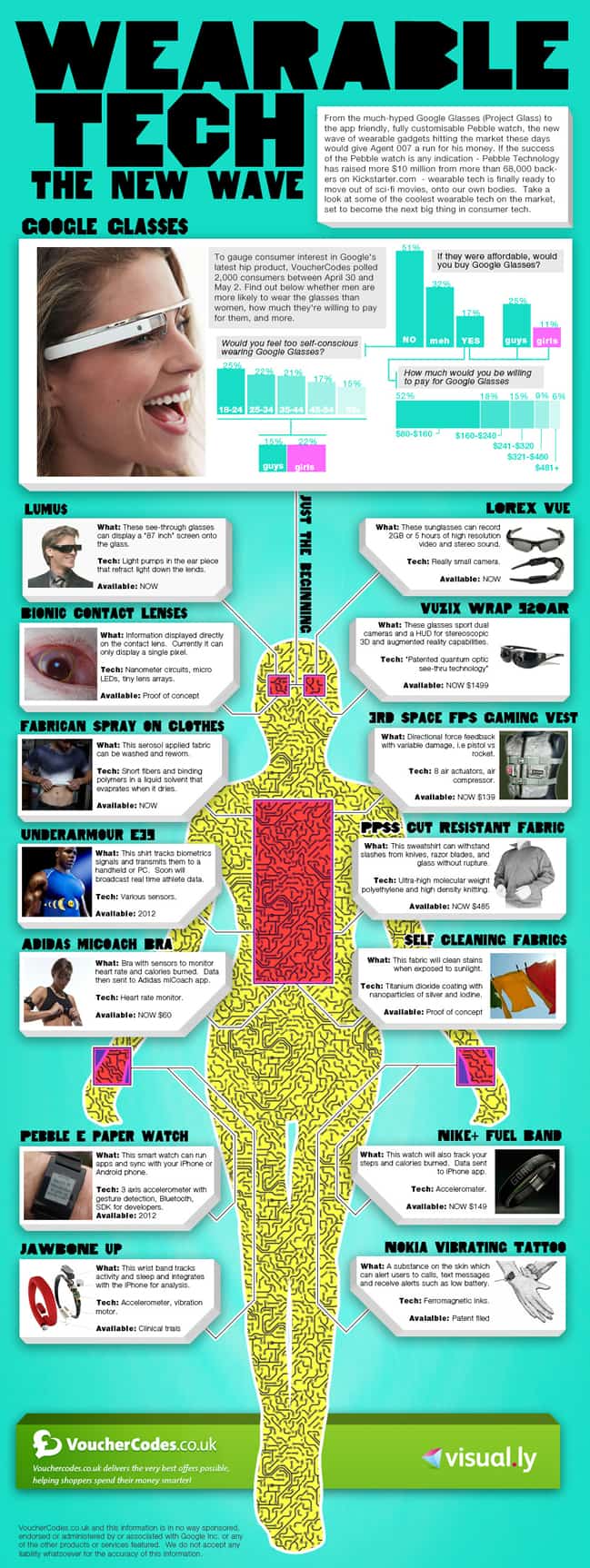
When Google first unveiled its Project Glass, an initiative aimed at creating augmented reality glasses, many people just assumed that it was another one of the company’s signature April 1st farces. Following our initial article on the prototype that emerged from Project Glass, Google Glasses – Google Glasses (Project Glass) : The Future Of Human Computer Interaction?, more photos and videos have emerged, further confirming how serious Google is about Project Glass. In this article, we explore the viability of Google Glasses from a commercial perspective.
What are Google Glasses?
Google Glasses are the prototype that emerged from Google’s Project Glass. From the outside, they are a pair of eyeglasses that visually appear slimmer than normal eyewear. These glasses provide a clear computer screen just above the right eye that can be interacted with through speech. It can help the user with everyday tasks such as getting directions, looking up a definition, or checking a bank account. When the application is running, the user can look up to see the screen and down (or straight ahead) to see the world around him. When it is not running the full sightline will be clear.
Google X, the company’s semi-secret lab that works on cutting-edge innovations ranging from an electro-optic cable for free space laser antennas to self driving cars, has been working on Project Glass for some time now. In fact, in our initial report we have shown the famous “Project Glass: One Day …” YouTube video as well as photographs of Google’s co-founder Sergey Brin and Google X Founder Sebastian Thrun who have been spotted wearing Google Glasses in public. Since then, more photos as well as the first video taken with Google Glasses have emerged:
But Will People Actually Wear Google Glasses?
Project Glass naturally begs the question: would people actually use this product in their everyday life? It is difficult to say. On the one hand, the envisioned glasses do have some benefits to offer. For example, an individual walking down the street could get a map juxtaposed upon their surroundings. History has taught us that Google has a loyal enough following that anything it releases could garner interest on the market.
An interesting survey carried out by VoucherCodes and Visual.ly earlier this month using 2,000 consumers has yielded the following results:
- 51% will not buy Google Glasses even if they were affordable
- From the yes respondents, 52% are only willing to pay up to $160 for a pair of Google Glasses
- Men are more likely to buy Google Glasses than women
- People within the 18-24 age group are likely to feel self-conscious wearing Google Glasses
- Self consciousness of wearing Google Glasses is more common with women than men
VoucherCodes and Visual.ly also published the infographic below to show these results whilst also presenting an array of wearable technologies, some of which are already available.

From a long-term perspective, Project Glass would need widespread saturation in order to be viable. After all, save for the early adopters, the majority would only be willing to walk around with such glasses when a considerable amount of their peers are doing the same. Google would need to make a convincing argument that Google Glasses have advantages over more mainstream technologies such as smartphones. Moreover, due to its innovation, Google will also need to focus with creating the need for its product, pretty much like Apple did for the iPad.
A report published in the New York Times speculated that Project Glass will release a product to the market by the end of 2012. That prediction now seems to be incorrect, and Google has not publicly announced when, if ever, the market production stage will commence. But if this product ever does reach the market, it will be very interesting to see how it’s received.
I guess that only time will tell.
Want to learn more?
If you’d like to become an expert in UX Design, Design Thinking, UI Design, or another related design topic, then consider to take an online UX course from the Interaction Design Foundation. For example, Design Thinking, Become a UX Designer from Scratch, Conducting Usability Testing or User Research – Methods and Best Practices. Good luck on your learning journey!
(Lead image: Depositphotos)
